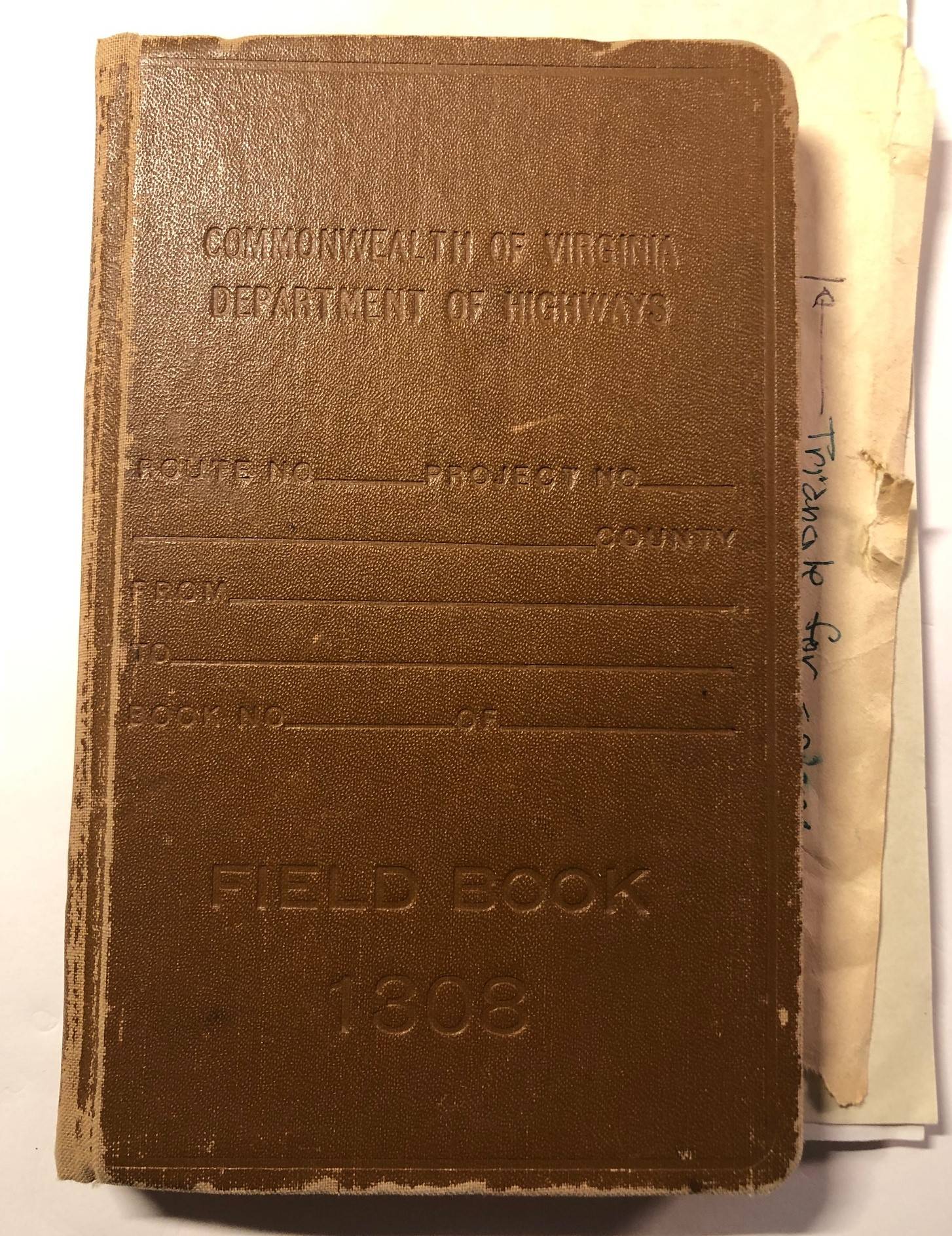Keep a project book!

Why start a project book?
Well, why not? Oh, wait, you aren't supposed to answer a question with a question. My bad. Let's try this again, to create a DIY journal and a design guide is the best reason to create a project book. There's more to it than this, as I'll share in short order.
The ideal project book
My current project book was given to me by my father-in-law, Jack Ferguson. It measures 7.5" x 4.5" x 1" and all the pages have a grid, something I especially like as it helps when drawing a design. The size is great because it allows me to draw a bigger design and still have room for dimensions, notes and a bill of materials (BOM).
What is a BOM? Very simply, a BOM is a list of everything you will need to complete a project. In other words, it is a shopping list. It is indispensable when you head to the store to get the stuff you need to build your design.
Any journal-type book is fine so long as the pages are permanently affixed. You can use a spiral notebook as well, however, my experience with these is that the cover doesn't hold up quite as well and the paper is of poor quality. On the other hand, they have the advantage of lying flat, being inexpensive and likely to be something everyone has at home.
My recommendation is to pick the size and type that works for you and to use it in your DIY efforts.
How do I use my project book?
Let me start with my favorite use, creating a design for a project I want to complete. When I have an idea for a project, or when one shows up in my honey-do list, I find it useful to sketch it out in my project book.

Take a look at the left hand page in the picture above. We have a bench seat in our entryway. It looked rather plain, even though we had a nice mirror hanging over it. A honey-do request was appropriately logged in my memory bank, so I grabbed my project book and began to create a design.
Hey, you've used "honey-do list" twice. What is this list you reference? It's the list your spouse, partner or significant other maintains that has all the things they've asked you to do for them, generally around the house and in the yard. "Honey do this, honey do that..."
Capture the idea on paper
The design intent was to create the impression of panels like you might find on the walls of old English manor houses. To achieve this effect, I decided to use 2" wide white pine furring strips and outline the panels. Take a look at the design. The bench is the bottom third of the drawing. The panels are the middle third (six panels total) and the upper third is a large single panel. A shelf is attached over the middle third and coat hooks are to be installed below it.
Welcome to the world of nominal dimensions! When working with lumber, the stated size in width and thickness is what the industry calls "nominal" dimensions. What this means in practical terms is that my 2" W x 1" D furring strip is actually 1.5" x .75". Lengths are not nominal thank goodness. This practice has been around for as long as I can remember and the actual dimensions have shrunk during this time.
Tangent mode off, now back to capturing the design. Grab your tape measure, a pencil and your project book. You can bring a ruler if you want nice straight lines. I do not generally use a ruler since I have grid lines. True, my drawing doesn't follow the lines perfectly, but I am okay with that.
Sketch your design's outline in pencil and add the overall dimensions. Why a pencil? Makes it easy to correct errors, flubs in drawing or design changes. Correction tape also works if you prefer to use a pen. Start to fill in the rest of your design and add measurements as needed.
Build the BOM and add notes
Take a gander at the larger picture of my entryway design below. You'll see my dimensions, some notes and the beginning of a rudimentary BOM in the upper left. Note that each item has an associated letter. Now check the design again and you'll see the letters in circles on the pieces that are that size.

The BOM can be built by counting the number of each piece, total the total length and divide by the length of lumber you plan to use. The result is the number of pieces of uncut lumber you will need. The length is dictated in my case by what I can get in my car without tying it to the roof.
Add to this count the other items you will need for the project. In this case, they were:
- 3" sheetrock screws - one box.
- Spackling to cover screw heads and fill any gaps where the cut materials meet- one container. I like the lightweight type that dries quickly. Note: While not intended for use with wood, in cases like this, I have had excellent results.
- Sandpaper to smooth the spackling - small package of assorted grits, I like 80 and 220.
- Paint, if not on hand.
- Painting supplies - stirring stick, drop cloth (newspaper works great), brush, screwdriver to open the paint can.
You can create a separate list or put it in your project book. I recommend taking your project book with you to the store. I find the folks at both big box and neighborhood stores to be quite helpful. Show them what you are building and they are likely to have suggestions for improvements.
Adding notes to your design is also helpful. I find that my design may be complete long before I have time to build it. This example is a case in point - the design is from March 20, 2016, and it is still a work in progress. Given the potential time lapse between design and construction, cool ideas for execution may be forgotten. Having them with the design is a perfect way to call them back to mind.
Don't be afraid to change the design
There is an old adage that goes something like this, "A battle plan never survives the first contact with the enemy." In short, it means what looks good on paper is likely to need to be changed in real life. In warfare, your adversary will react in ways your battle plan didn't anticipate.
In DIY, Murphy, gremlins, the phase of the moon and irregularities in your home's construction can present the need to change your design. For me, I tend to over-engineer the solution. Once I get started, I frequently find better ways to do things. A valuable piece of advice here is to keep your receipts. You can return uncut lumber and unopened supplies for a refund.
Other uses for your project book
True, my favorite use of my design book is to draw up what I want to build. I also use it to:
- Keep the business cards of contractors and stores. I tape them to a page near the project they relate to.
- Track my honey-do list.
- Record techniques that worked well for future reference.
- Tape in pictures from catalogs of things I'd like to build.
The uses are up to you! It is a cool way to tackle and document your DIY successes and learning experiences. The only requirement is to use one!
